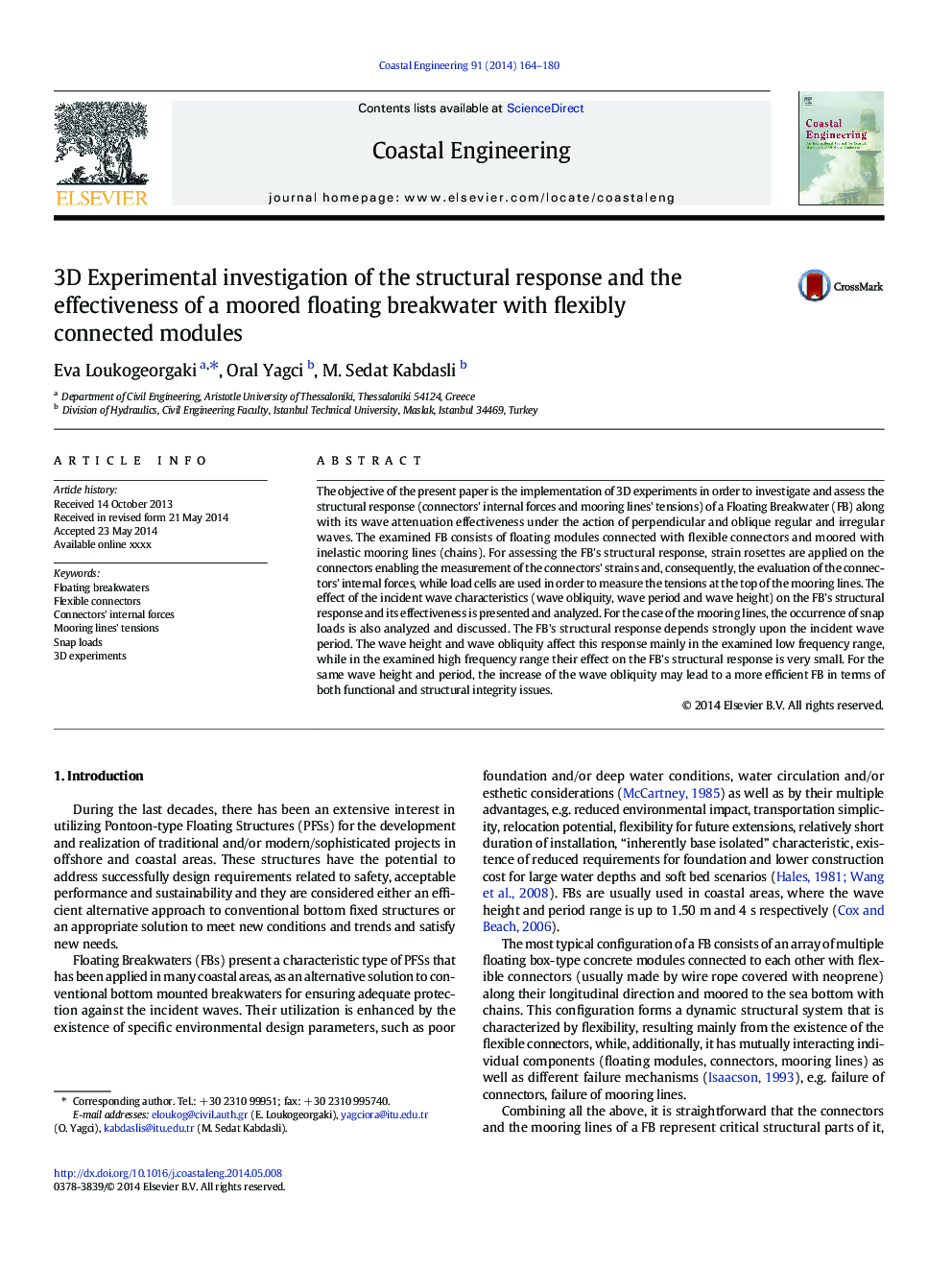| Article ID | Journal | Published Year | Pages | File Type |
|---|---|---|---|---|
| 8059816 | Coastal Engineering | 2014 | 17 Pages |
Abstract
The objective of the present paper is the implementation of 3D experiments in order to investigate and assess the structural response (connectors' internal forces and mooring lines' tensions) of a Floating Breakwater (FB) along with its wave attenuation effectiveness under the action of perpendicular and oblique regular and irregular waves. The examined FB consists of floating modules connected with flexible connectors and moored with inelastic mooring lines (chains). For assessing the FB's structural response, strain rosettes are applied on the connectors enabling the measurement of the connectors' strains and, consequently, the evaluation of the connectors' internal forces, while load cells are used in order to measure the tensions at the top of the mooring lines. The effect of the incident wave characteristics (wave obliquity, wave period and wave height) on the FB's structural response and its effectiveness is presented and analyzed. For the case of the mooring lines, the occurrence of snap loads is also analyzed and discussed. The FB's structural response depends strongly upon the incident wave period. The wave height and wave obliquity affect this response mainly in the examined low frequency range, while in the examined high frequency range their effect on the FB's structural response is very small. For the same wave height and period, the increase of the wave obliquity may lead to a more efficient FB in terms of both functional and structural integrity issues.
Keywords
Related Topics
Physical Sciences and Engineering
Engineering
Ocean Engineering
Authors
Eva Loukogeorgaki, Oral Yagci, M. Sedat Kabdasli,
